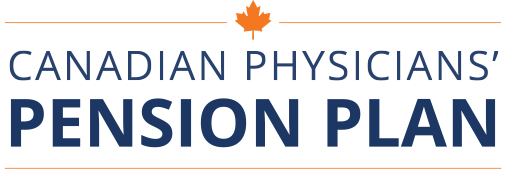About Us
The Canadian Physicians’ Pension Plan (CPPP) is a federation of individualized pension plans established by professional corporations.
This federation is administered by Canadian Physicians’ Pension Plan Corp. a federal corporation whose mandate is to supervise the selected financial institutions and other partners that service the retirement needs of participating physicians.
CPPP services physicians and their families across Canada in both English and French.
Top 10 Frequently Asked Questions
How does CPPP work?
The CPPP is a federation of individual pension plans (IPPs or PPPs) set up by the medical professional corporations of physicians. By pooling assets with a single portfolio management firm each physician is able to command lower fees and economies of scale enabling the gradual elimination of actuarial fees over time.
Who is eligible?
Any physician in Canada receiving T4 income (Salary or bonus) from his or her Medical Professional Corporation, if under age 71.
How do I contribute?
The Medical Professional Corporation contributes to the pension plan based on a few factors such as: age of the physician & level of T4 income paid in the current year.
What is the formula to determine benefits?
The defined benefit provided by the plan is generated by the following formula:
2% x Pensionable Salary x Years of Credited Service.
Example: If the Salary is $100,000 and the Physician contributes for 30 years, the annual pension paid in retirement would be:
= 2% x 100,000 x 30
= $2,000 x 30
= $60,000/year
Retirement, defined
Retirement under CPPP simply means no longer receiving T4 income/salary from the Medical Professional Corporation and turning on the annual promised pension. A physician can continue to practice medicine and Provincial Health Systems will pay the Professional Corporation for services rendered. At that point, the Physician can receive both a regular pension from CPPP and dividends from the Medical Professional Corporation.
What would happen if I took a leave of absence?
Presumably, the Physician may decide to stop receiving a salary from the Medical Professional Corporation (“MPC”). Since tax deductible contributions made by the MPC are a percentage of T4 income paid, the contributions would stop during the leave of absence. The plan would continue to exist until the physician comes back into active participation or decides to retire instead.
How is my family protected after my passing?
In two main ways. If family members also participate in the plan because they receive T4 remuneration as well, upon the death of the Physician member, the retirement capital inside the plan is not taxed and this surplus remains available for the survivors to enjoy.
If family members do not participate in the plan, they can still appear as “designated beneficiaries” of the Plan. Upon the death of the physician, in the absence of a surviving spouse, the assets of the pension plan are paid to the designated beneficiaries.
What Canadian provinces is CPPP available?
Physicians across Canada can join CPPP.
Are there investment management fees?
Yes, the portfolio manager that invests the assets of CPPP customers levies investment management fees calculated by reference to total assets under management. These fees are fully tax deductible to the Medical Professional Corporation. Moreover, because the pension plan offers 6 new additional contributions beyond those offered by RRSPs, the tax savings and additional assets available for retirement cover these fees multiple times over.
What kind of ROI can I expect by participating in CPPP?
While the ultimate Return on Investment varies depending on the risk appetite of the physician, the balanced approach followed by CPPP’s portfolio manager aims for a consistent return between 6% to 10%, with minimal risk of loss of capital invested.

